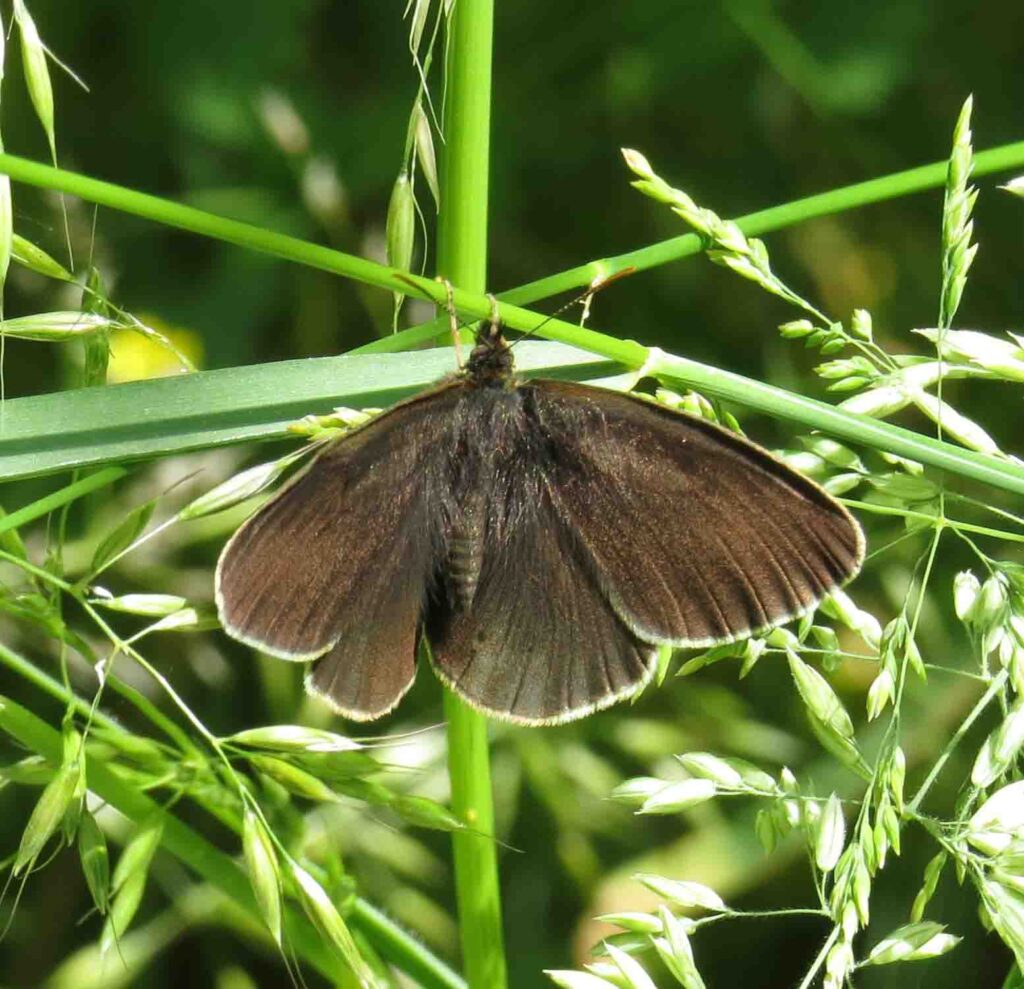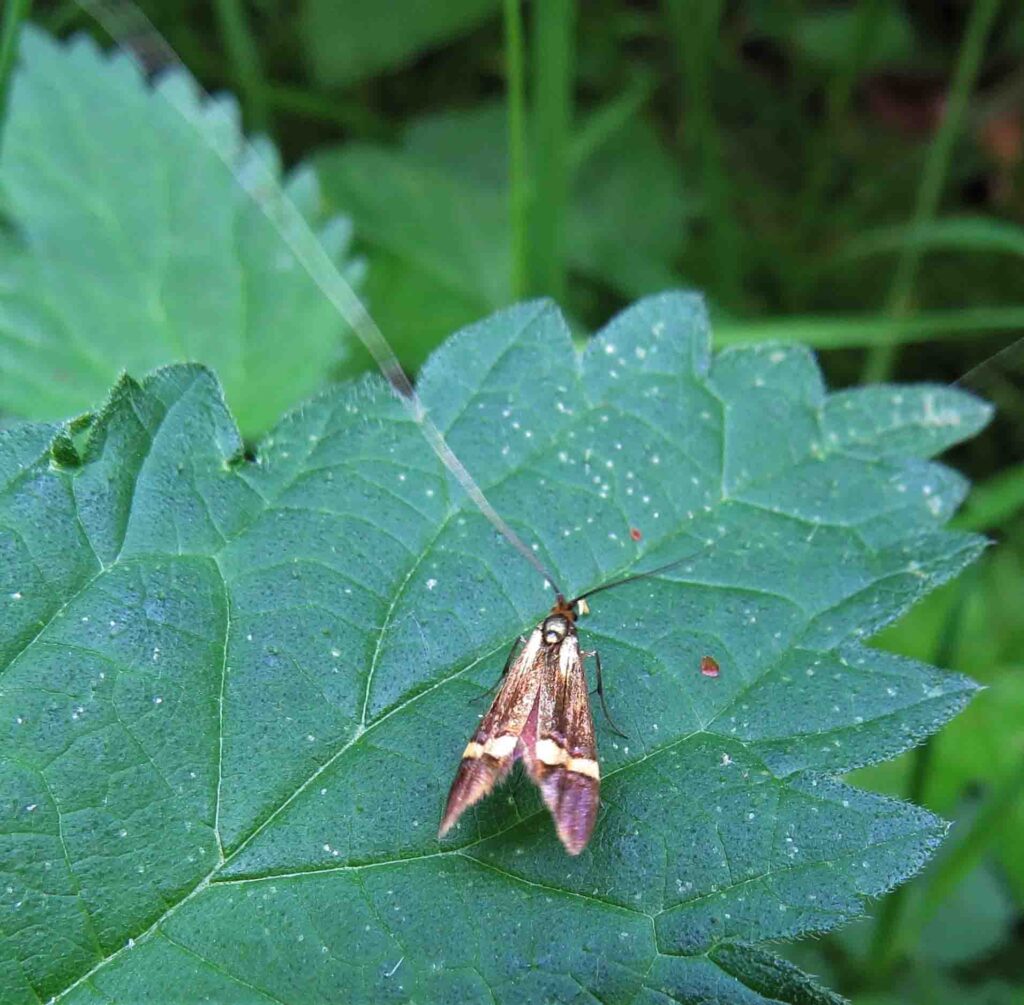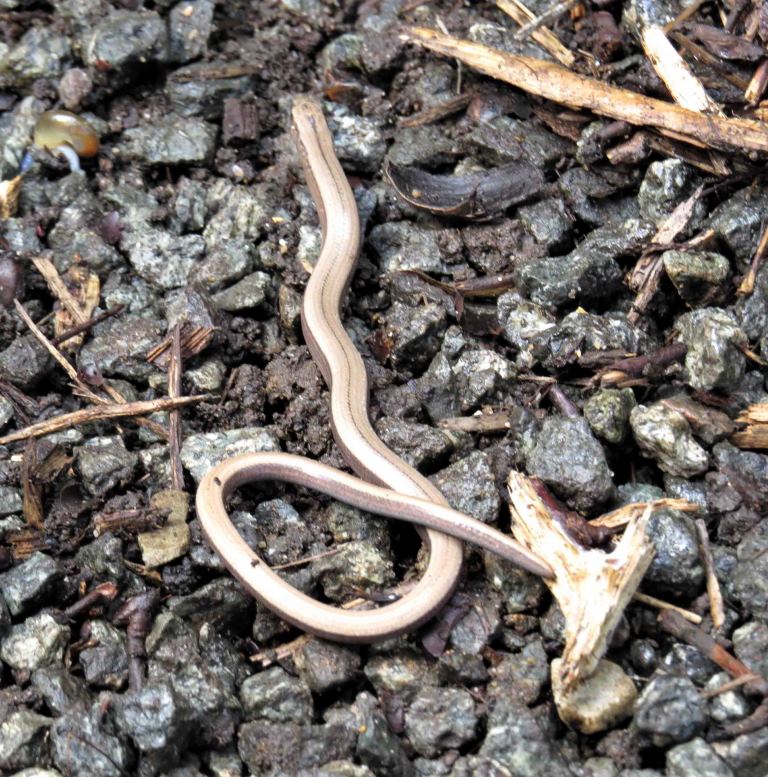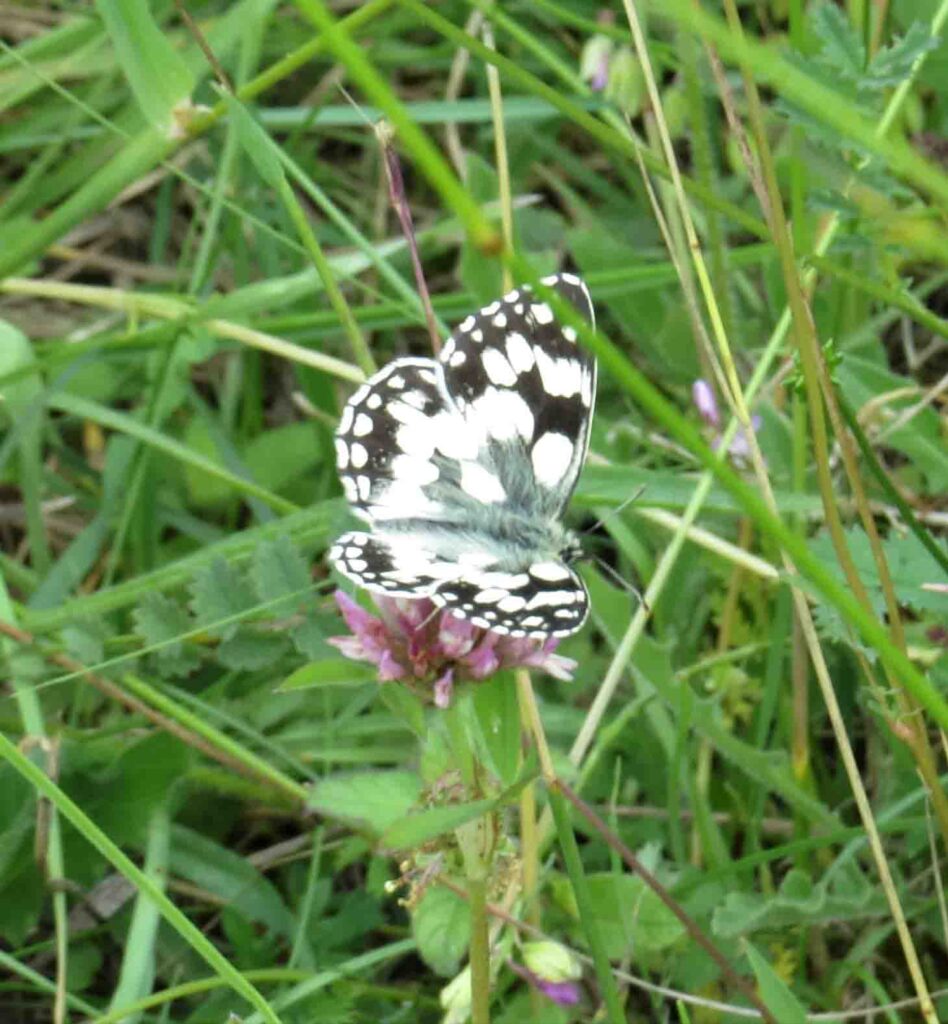Fiona Cummins led a walk which started from the Butchers Arms at Sonning Common on Wednesday 23 June. It was a pleasantly warm sunny morning and Swifts flew overhead as the walkers gathered in the pub car park. After a brief stretch along the road, the route led north-eastwards across a grassy field where Meadow Brown butterflies were on the wing and into Spring Wood. The wood is named after a bricked-in spring, decorated by a plaque with a stone carving of an elephant. Two common molluscs, the Round Snail Discus rotundatus and the Moss Snail Cochlicopa lubrica were observed on the underside of a dead log. Another shell, the Kentish Snail Monacha cantiana was abundant on grass and other vegetation throughout much of the walk. The footpath led steeply down beneath Beech trees, then crossed the steep grassy field of Stony Bottom, where a number of Small Heaths and a single Red Admiral butterfly were seen. The path emerged at Rotherfield Peppard church. Hedgerow Crane’s-bill was in flower by the churchyard wall and a Pied Wagtail flew between the graves. The next footpath led across a grassy paddock to the golf course. A Swallow flew over the field and a flock of Starlings flew down from the adjacent hedgerow. The track across the golf course led through woodland. Flowers seen beside the path included Common Spotted-orchid, Goat’s-beard, Agrimony and Perforate St John’s-wort, while butterflies included Speckled Wood, Ringlet and a fresh male Large Skipper. The route then continued up through woodland to Crosslanes near Rotherfield Greys. Many of the path-side trees, including Hazel and Sycamore, showed the same signs of defoliation by a plague of caterpillars which had been noted three weeks earlier on the walk to Miram’s Copse at Bradfield. But the trees here had since put on a fresh growth of leaves which had so far escaped devastation by the caterpillars. At Crosslanes, a Slow-worm was found under a sheet of wood in front of the derelict White Cottage.
The walk continued along a track which led to the top of Flowercroft Wood. Flowering Honeysuckle draped the trees and birdsong echoed through the woods, particularly the songs of Blackbird and Blackcap. A dead Fox was lying on the path, attended by a cloud of insects. Wood Melick and Wood Millet, two ancient woodland indicator grasses, were found beside the track and there were a number of big clumps of Spurge-laurel. The path led out onto the open Chalk grassland of Kent’s Hill. Pyramidal Orchids dotted the turf and butterflies flying in the sunshine included Marbled White, Large Skipper, Meadow Brown and Small Heath. At the bottom of the clearing, a narrow path wound downwards through dense Dogwood scrub. A pair of Bullfinches called but remained hidden. Seeds on a White Helleborine spike and a flowering Common Twayblade were noted. The next path followed the wide ride up the dry valley at the bottom of Flowercroft Wood. Again, flowering Honeysuckle was abundant, but there was no sign yet of the White Admirals which can be seen here later in the summer. At the edge of the wood, the next track turned westwards along the edge of a field where the grass had recently been cut and wrapped up in big plastic bales. A Musk Thistle and a Mother Shipton moth were amongst the sightings in the field margin. The walk continued up the hill to Blounts Farm. A Whitethroat called from the hedge and a tiny Nettle-tap moth was resting, appropriately, on a nettle leaf. A colourful ditch and bank beside the farm had abundant Fox-and-cubs, together with Scarlet Pimpernel and a few flower spikes of Dark Mullein. The final section of the route was a short stretch back along the road to the pub, where some of the group stayed for lunch.
Pictures by Fiona Brown






